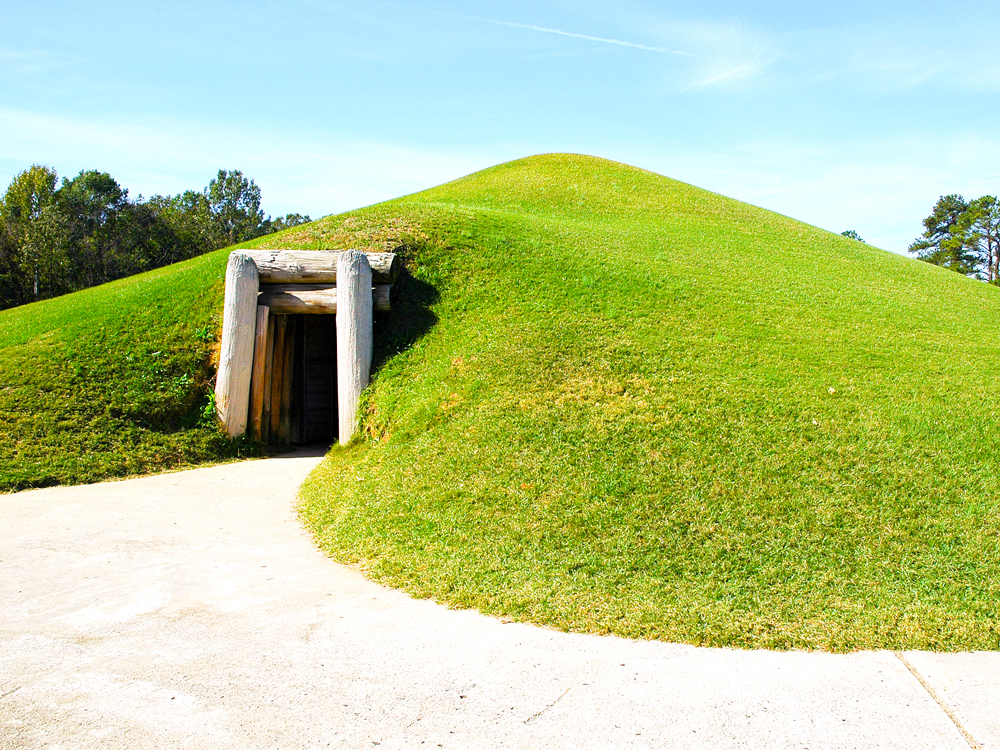Since Yellowstone became the first national park in 1872, 62 other national parks have joined the fray, in addition to hundreds of other sites managed by the National Park Service. And this list of protected areas is ever-growing, with eight locations being elevated to national park status in the 21st century alone. Today, many groups around the country are lobbying to bring a national park to their communities. One such effort has made significant progress in recent years, and it currently has bipartisan support in Congress — which may help make this particular national park dream a reality in the near future. Should this happen, one Southern U.S. state would be getting its first national park.
The History of Ocmulgee Mounds

Ocmulgee Mounds National Historical Park is located about 2 miles east of Macon in the central part of Georgia. The region’s history dates back far before Macon was established — in fact, this prehistoric site has been continually inhabited by humans for upwards of 17,000 years. Ancient peoples arrived here sometime before the year 9000 BCE to hunt large mammals, and many hunter-gatherer groups inhabited the Macon Plateau over the ensuing millennia. This includes the Muscogee (Creek) Nation, a group that was forced to relocate to Oklahoma in the 1800s. Today, the Ocmulgee Mounds are considered the ancestral home of the Muscogee Nation, making it especially significant among their descendants.
Archaeologists have uncovered many artifacts dating back thousands of years, such as pottery, arrowheads, and farming tools. The site’s namesake mounds were built sometime around the year 900 CE. These larger-than-life piles of moved earth were created by a group known as the Mississippians, who inhabited the region from around the year 800 until about 1600. The mounds were used for a variety of purposes, including for funerary sites and as a home for the village chief.
Today, there are seven of these giant mounds located on park grounds. The largest is the 55-foot-tall Great Temple Mound, which boasts a base of 300 by 270 feet. The Funeral Mound, another impressive site, stands 25 feet high and contains 8-foot-deep pits beneath that were used for ceremonial burials.
Why Ocmulgee Mounds?

While there are many beautiful natural landscapes across Georgia worthy of preservation, it’s the natural beauty, as well as the cultural significance of the Ocmulgee Mounds, that make this site stand out above the rest. The National Park Service’s mission statement is to preserve the nation’s “natural and cultural resources… for the enjoyment, education, and inspiration of this and future generations.” And if Ocmulgee Mounds is elevated to become a national park, it immediately puts this historically significant site on the radar of many more Americans.
In the words of Tracie Revis, the director of advocacy for this initiative, it’s important to “help make the park accessible so that the public can learn about the land’s 17,000 years of continuous human habitation.” Revis adds, “It’s beneficial for our people in Oklahoma… to be able to come back and enjoy this land and know that it’s protected.”
Seth Clark, another individual involved in this lobbying effort, says that “the process of creating this park has been a real source of healing and reconciliation between the tribal and non-tribal communities.” Other Georgians are excited about the economic benefits that a national park would bring to Macon, including an expected sixfold increase in visitor numbers.
Ongoing Efforts for National Park Status

The preservation efforts at Ocmulgee Mounds date back to 1936, when President Franklin D. Roosevelt set aside 678 acres of land as a national monument. But it wasn’t until 2019 that Ocmulgee Mounds became a national historical park. This current status affords the mounds less protection and funding than if they were a national park. The good news is that a Special Resource Study was recently conducted to determine if the mounds were worthy of becoming a national park, which is the first step toward achieving that goal.
Another boon for the project is the bipartisan support from both politicians and members of the community. Local political figures, as well as representatives from the Muscogee Nation, have worked in tandem to promote the idea of a national park for Ocmulgee Mounds.
On May 1, 2024, legislation was formally introduced by Georgia’s congressional delegation to transform the Ocmulgee Mounds into a national park and preserve. This effort is currently led by Representative Sanford Bishop, Representative Austin Scott, and Senator Jon Ossoff.
Should the bill be adopted, it would nearly double the 2,800-acre footprint of the current park and allow the secretary of the interior to acquire more private land within the proposed boundaries. Assuming these efforts are finally successful, Ocmulgee Mounds would become not only the first official national park in Georgia, but also the first national park site co-managed by a removed Indigenous tribe.
More from our network
Daily Passport is part of Optimism, which publishes content that uplifts, informs, and inspires.























